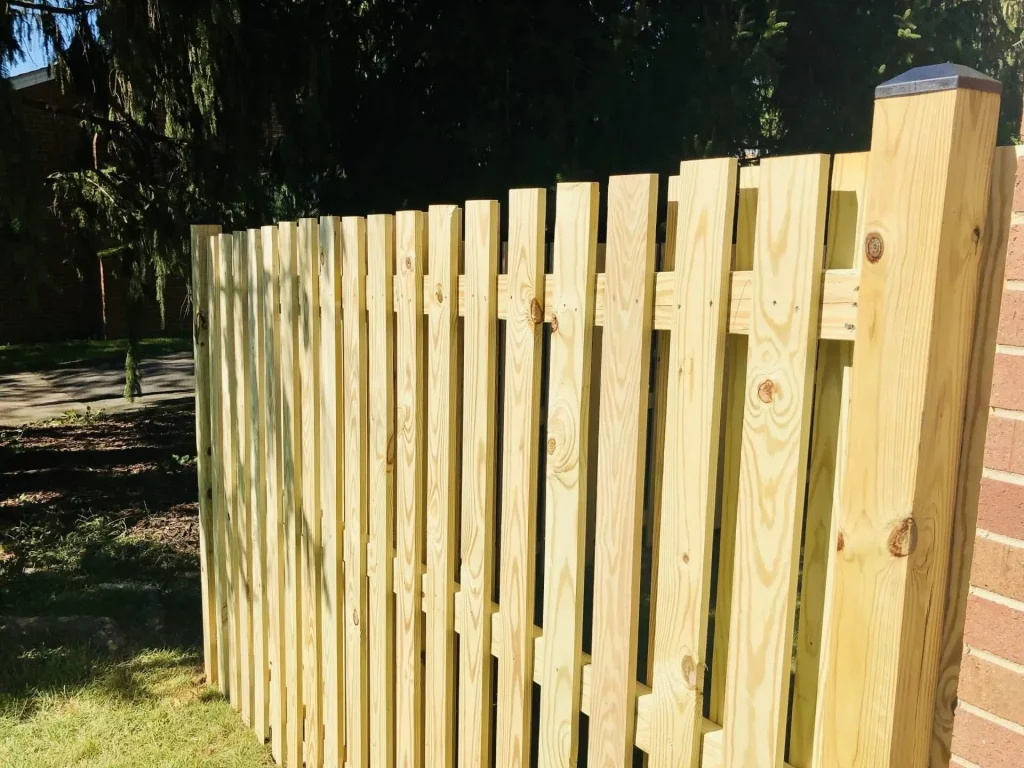Wood Fences
Combining quality products, outstanding experts, & impeccable attention

Wood fences have been a staple choice for property boundaries for centuries; it is a timeless, versatile, and affordable fencing option usually chosen for its natural beauty. The most popular choice of fencing material, wood offers a variety of benefits. Wood is usually less expensive than metal or vinyl, has an easy and quick installation, and is the most sustainable option. These fences blend in with their surroundings, allowing privacy and increasing your property’s curb appeal. Wood is the most easily customizable option and is easy to repair when needed. Rugged Fence offers wood fence installation, replacement, and repair services to help you create the yard of your dreams. Our experts have years of training and expertise with various fencing types. We are insured and work to provide competitive pricing without sacrificing quality.
Wood Fence Installation
Wood fences have been a staple choice for property boundaries for centuries; it is a timeless, versatile, and affordable fencing option usually chosen for its natural beauty. The most popular choice of fencing material, wood offers a variety of benefits. Wood is usually less expensive than metal or vinyl, has an easy and quick installation, and is the most sustainable option. These fences blend in with their surroundings, allowing privacy and increasing your property’s curb appeal. Wood is the most easily customizable option and is easy to repair when needed. Rugged Fence offers wood fence installation, replacement, and repair services to help you create the yard of your dreams. Our experts have years of training and expertise with various fencing types. We are insured and work to provide competitive pricing without sacrificing quality.
Types of Wood Used in Fencing
The most common types of wood used for fencing include:
Pine
Cedar
Redwood
Cypress
Spruce
Fir
Your choice of wood type may depend on the climate, your budget, and how durable you want your fence to be. Options like spruce, fir, and pine are the most affordable and are often treated to prevent rot and pests. Cypress and cedar are longer-lasting wood choices and naturally repel insects, but they may be a little more expensive than other options. Although it boosts the highest price, redwood is high-quality and a beautiful option for your fence.
Replacing Your Wood Fence
With proper upkeep, wood fences can last up to 15 or 20 years. Although long-lasting, your fence still needs occasional replacement. The need for replacement could be due to weather, rot, structural issues, or pest activity, especially when a wood fence has not been treated. The team at Rugged Fence can inspect your wood fence for damage and help you decide if it’s time for a complete replacement. It is essential to consider if you want your need fence to be the same type of wood and layout as your current setup. In some cases, we can reuse parts of your existing fence, especially if you use the same kind of wood. If a total replacement is warranted, we will remove the panels and posts, recycle materials, and install a new wood fence.
Repair and Maintenance of a Wood Fence
Wood fences require routine maintenance to keep them looking good and to combat breakdowns due to rot. Regularly sealing or staining your fence every few years will go a long way to preserving its initial structure and appearance. Our experts also recommend cleaning your fence regularly with water and soap. If your fence needs repairs even after regular maintenance, turn to the experts! We will examine your entire fence line, replacing boards and tightening screws. One benefit of wood fencing is that it is easy to repair since we can remove and replace a single slat or section.
What Are Wood Fences Used For?
Wood fences have a wide variety of uses, both commercially and in residential settings. They offer privacy, safety, aesthetic appeal, and much more at an affordable price. Wood fences can be found anywhere from farms, orchards, and ranches to homes, gardens, and community spaces.
Styles of Wood Fences
Post & WIre
Made of wooden posts with horizontal beams slotted through them, post and rail fencing are popular for farms and ranches to contain animals and dictate property lines. They are customizable, usually including two or three rails.
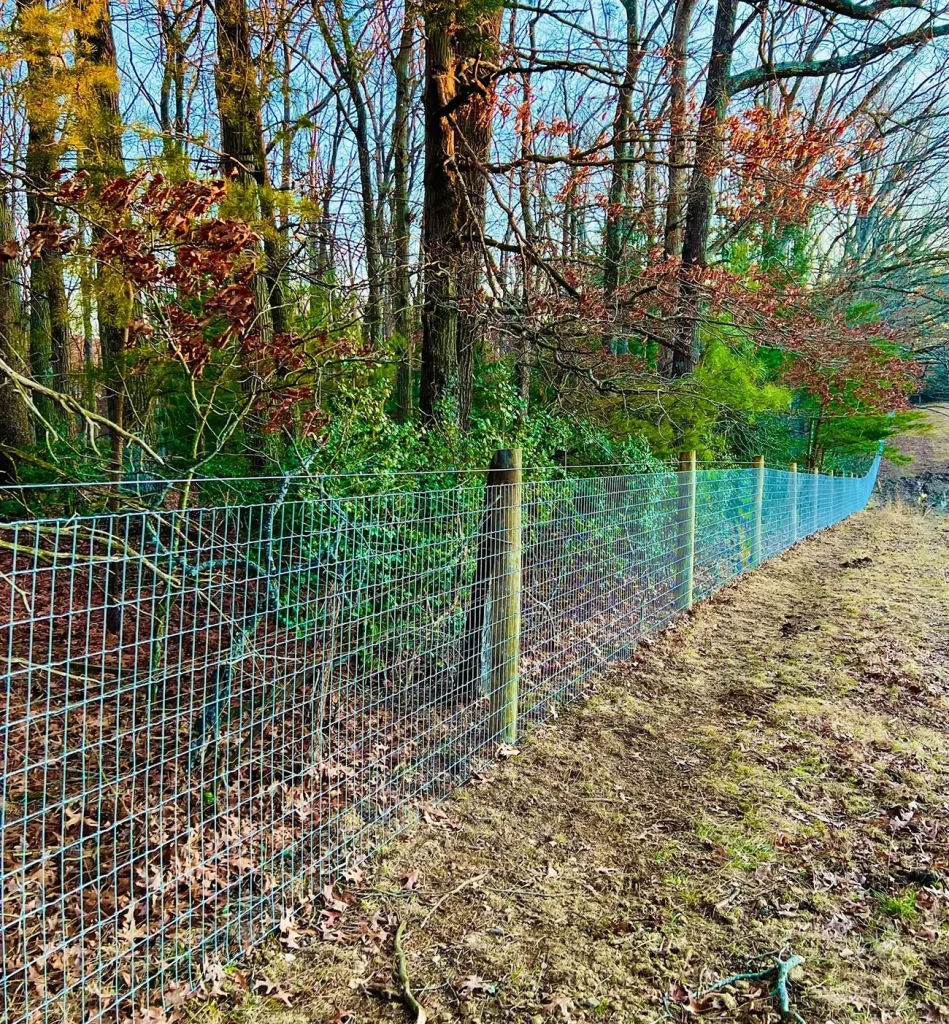
Split Rail
Similar to post and rail fences, split rail fencing uses split logs instead of more refined boards. These fences are an affordable way to dictate boundaries, usually used for decoration instead of a more practical purpose.
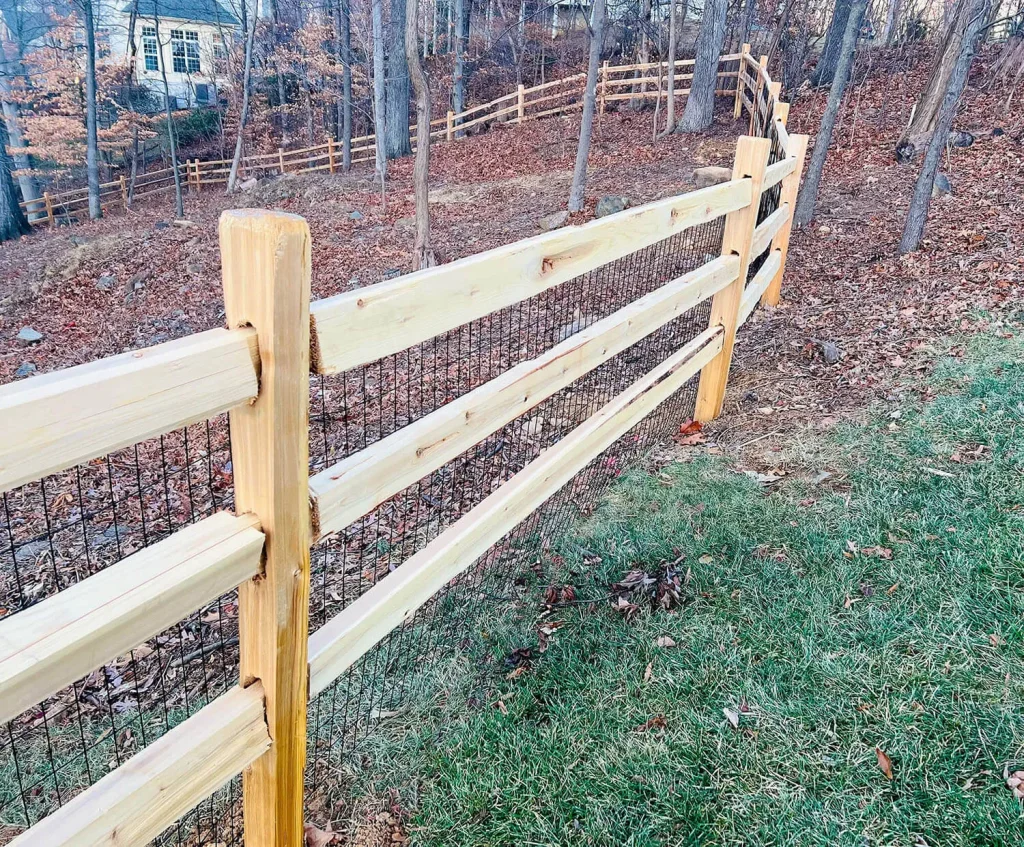
Board & Paddock
Also known as a paddock fence, board fences are often used to enclose large areas of land. They are made of flat boards made of wood fit together without gaps. Board fences are usually found in agricultural areas but can be an affordable residential option.
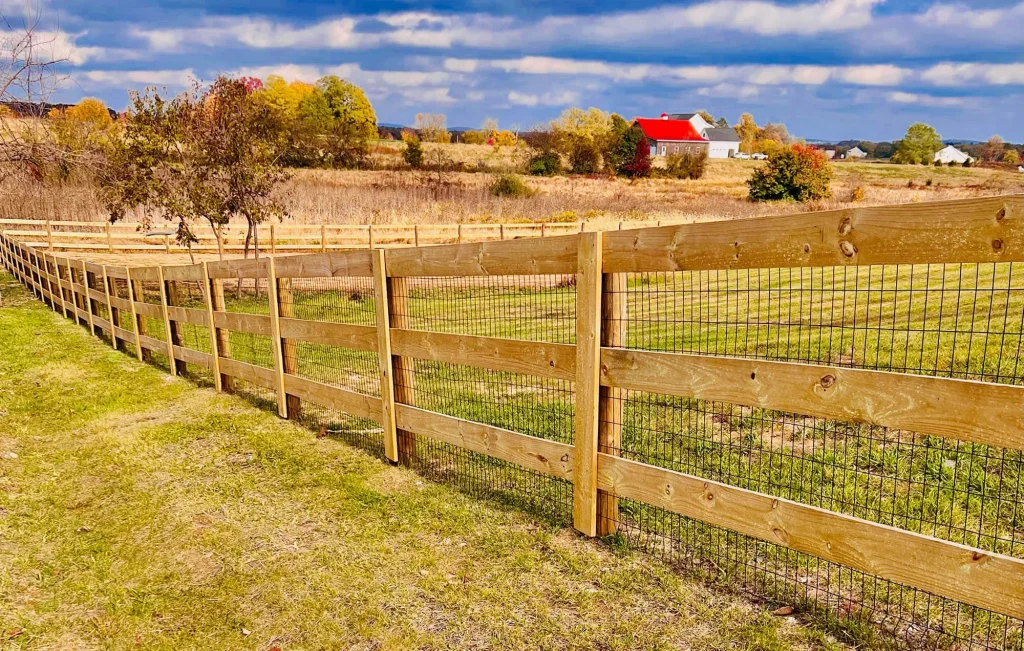
Privacy
Privacy fences are tall, usually 4 to 7 feet, with slats touching one another with no gaps. As their name implies, these fences offer privacy from neighbors. As a bonus, privacy fencing can reduce street noise and block unsightly yards from view.
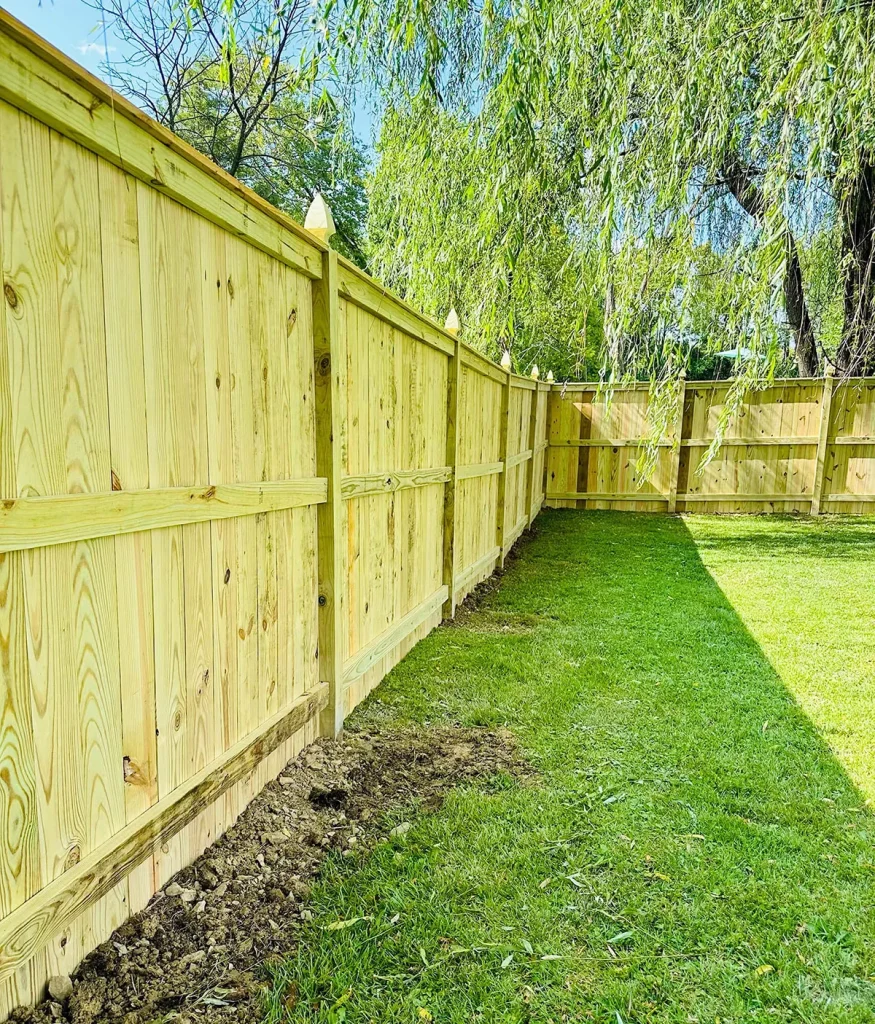
Picket
Picket fencing gets its name from the distinctive pointed tops of the boards. These boards are evenly spaced and often painted white. Picket fencing is often associated with residential homes, offering increased curb appeal alongside safety for children and pets.
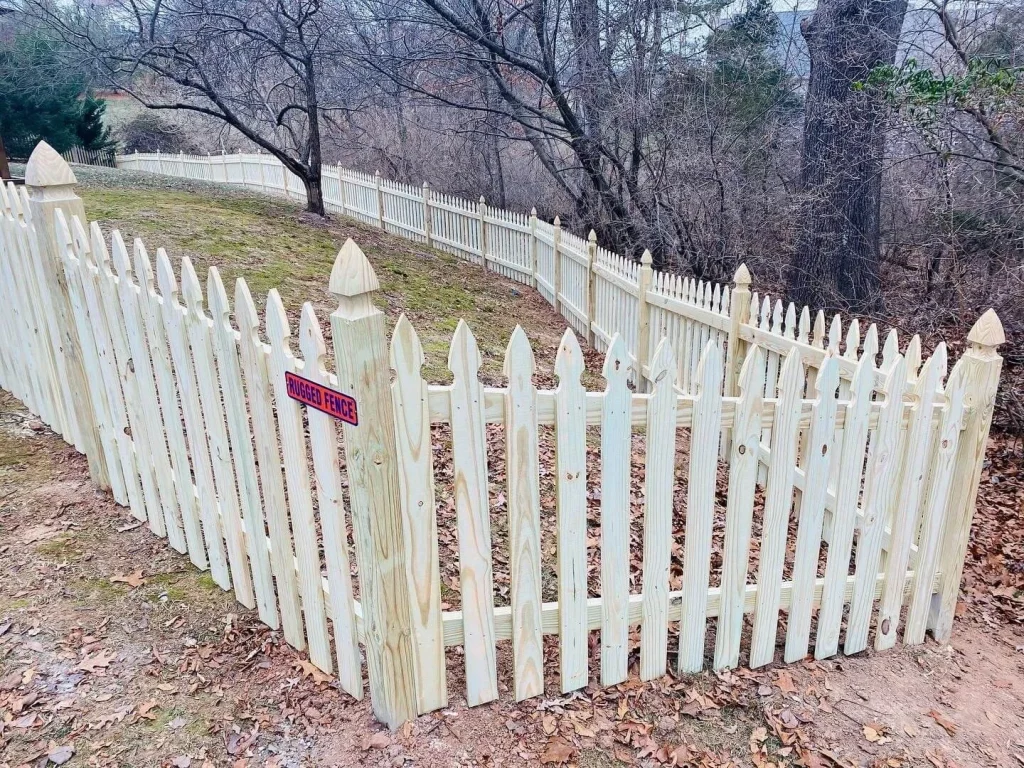
Lattice
Formed of a pattern of crossed strips of wood, lattice fences are a beautiful and decorative option. They come in various styles, including cross-hatched, crisscross square, horizontal, and arch-top. Lattice fencing is a great security option, allowing children and pets to have a private, fenced yard, and some styles offer privacy.
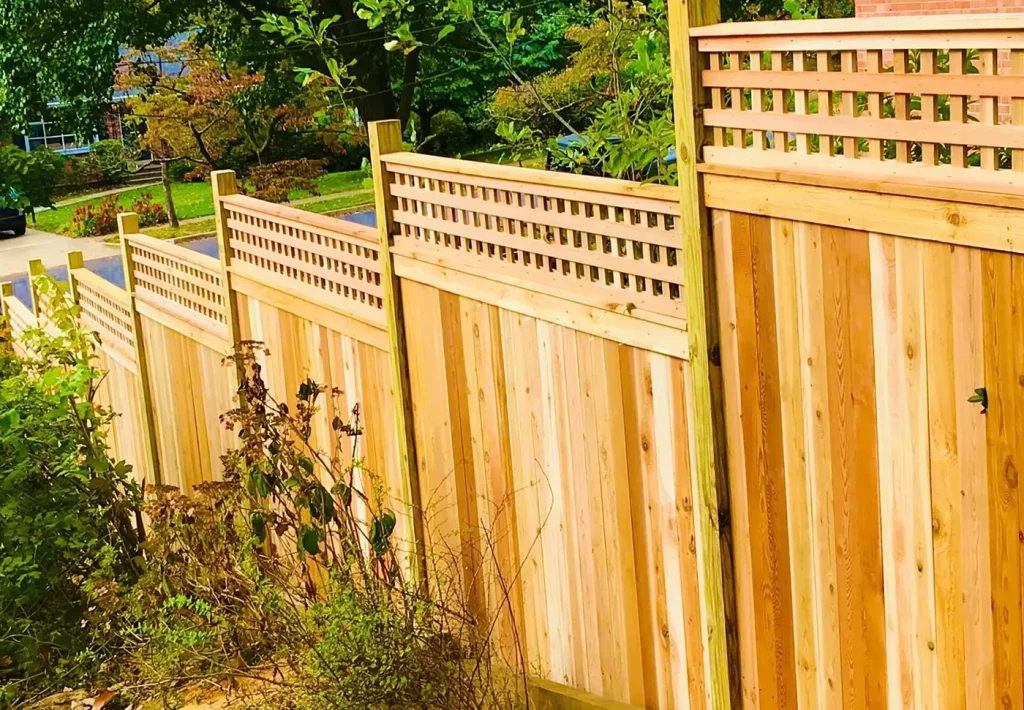
Shadow Box
Shadow box fences are a type of privacy fence that alternates slats on either side of the fence’s rail. Shadow box fencing looks attractive from either side and allows airflow and natural light while maintaining privacy.
